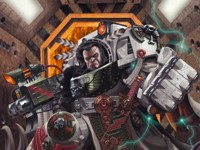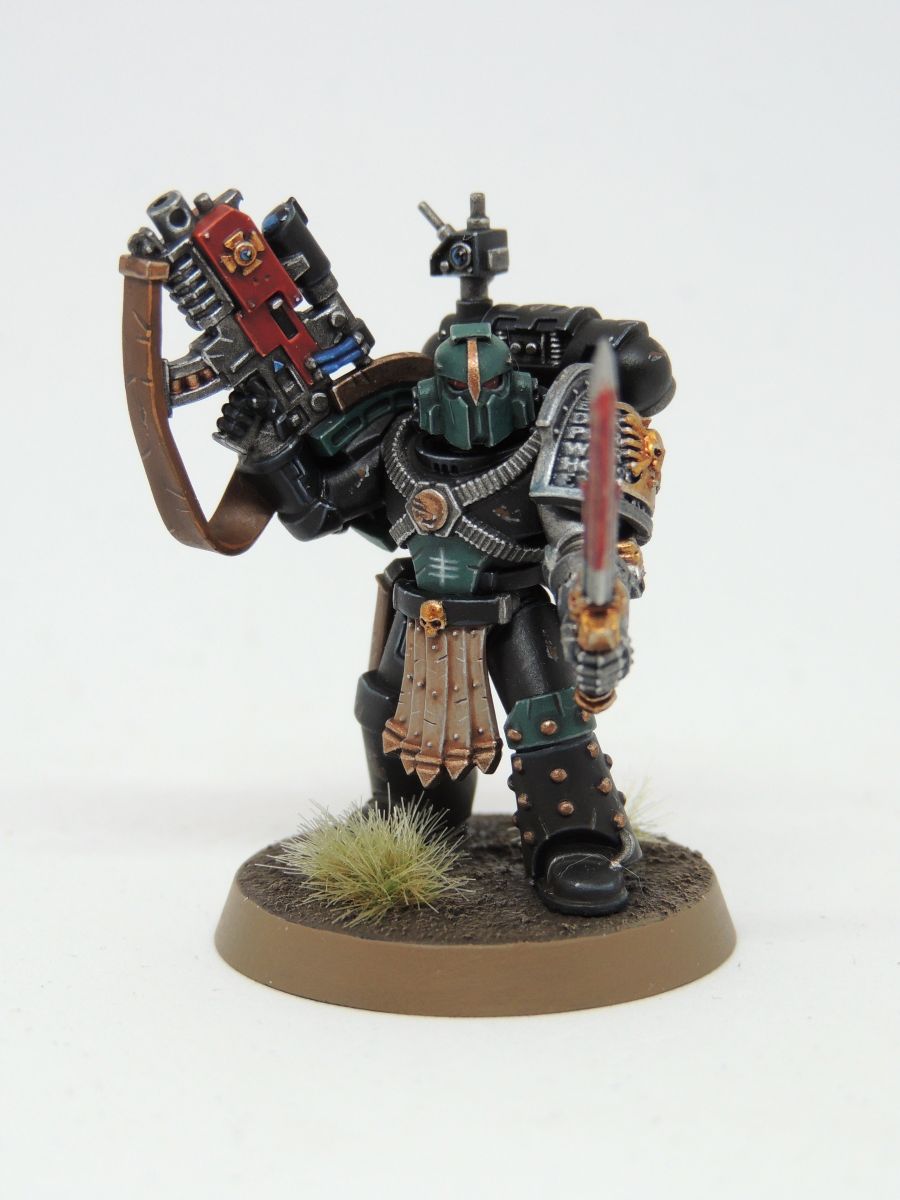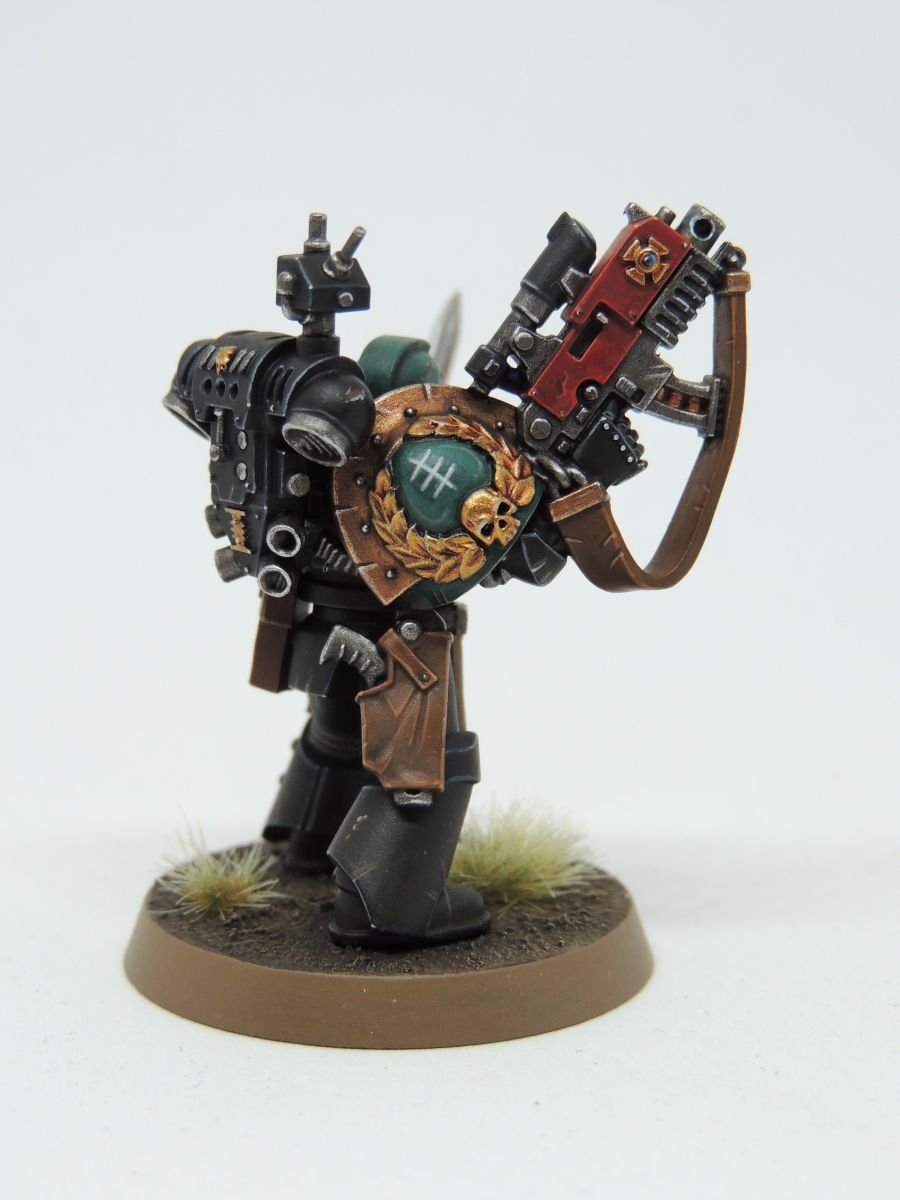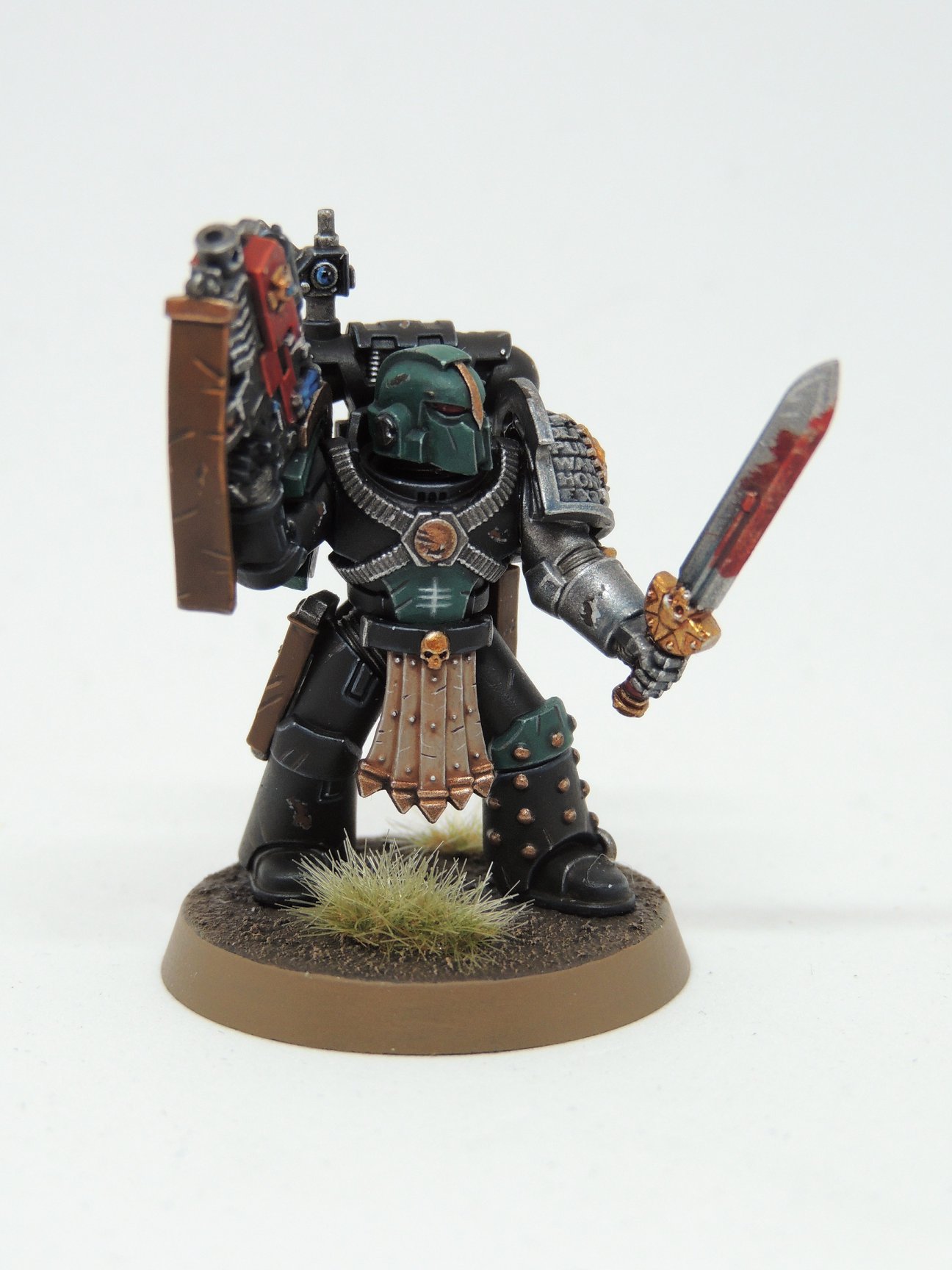Philhammer.com
It's been 4 years since my last post, yet to me it feels like yesterday - my perception of time is really messed up 😛 Anyway, I finally moved my philipsibbering.com blog over here, to philhammer.com. Most of this Philhammer blog is dedicated to Warhammer, and as I move away from that, I thought it would be a good idea to make a clear distinction between my IP and GW's IP. There is still a lot of stuff on here that is not about Warhammer. Until I find a new home for all my IP, I'll hide it away, so the menu is a little smaller than it used to be.
I plan for my old philipsibbering.com domain to become a business contact page, with links to projects and social media.
I'll also spin up another company website as a home for Spheres of War and Sciror, though considering the way ADHD and benefits complicate things, this might be a while.
SoW - 40K Mod
I'm also planning an unofficial 40K mod of Spheres of War. The focus will be on the Space Marines, using modified rules used for the Legionary power armoured troops. Rules play-tested for the Marines can be transferred over to the Legionaries, and vice-versa. Killing two birds with one stone, or bolt in this case. (Though a exploding bolt would take out several!) Of course you can use Marines as stand-ins for Legionaries. I'll be targeting the 'true-scale' gamer.
Power-Armour will be handled the same for both, and I'll introduce a couple of variants for the bolter, including my Philverse 'Octo-bolt' which is a multi-mode ammo for the bolter. A bit like Judge Dredd Lawgiver but it does not use different ammo. It is not the gun that has modes, it is the ammo.
Read the rest of this entry »Deathwatch Aquamarine
Fellow Bolter & Chainsworder Gust0o painted up one of my Aquamarines for his ambitious Deathwatch 40K - Every Chapter Project. I posted the paint job below, which I'm sure you will agree is superb. Very crisp and professional. Gust0o plans to paint up one example of all the canon chapters and a select few fan chapters, and I am honoured he has chosen one of my chapters to include in his project. I'm hoping he works his way through the entire 1,000 Chapter Project, or at least the Canon and DIY lists 🙂
Fan projects like this are the life-blood of the 40K community. So why not pop by his FaceBook page and show support, lobby for your (fan made) chapter to be included (also swing by B&C for it to be included in the 1K Project), and if you have plans for a crazy project of your own then why not start today?
Crystal Tech
I've updated the Crystal Tech description to make this version of photonic platform programmable. It lays the basis of an early machine revolt in the style of the Terminator trope, and one of the reasons that AI is banned by the Ad-Mec. It also brings up a biological argument of intrinsic nature for machines. The main change is this;
This is where the platform itself also becomes programmable. In other words, not only can software be programmed, but also the hardware can be programmed too. The ‘crystal block’ can be thought of as a blank system, and then the system is programmed into the block. This is like writing the motherboard, CPU, memory, SSD, GPU, etc. into the block. Once the block is programmed, it can then run software programs. The interesting thing about Crystal Tech is that the software program, if allowed, can alter the hardware program to modify itself. This is a natural part of the technology and has to be inhibited. This is the basis of some of the great AI in our history, but due to the self-programmability of the hardware and software, it also led to rebellion and the murder-bot massacres. Turns out that damage to the inhibitor returns the crystal to its natural state for hardware programmability, and the natural state is ‘on’. Those massacres left a deep wound in the collective human psyche.
The 'failure' of this technology leads to the development of the bio-wrapper for microbe biological construction of future photonics. Bio-photonics are cheaper to produce, but also have an intrinsic nature and not free-form (chaos) like pure crystal tech. The Artliects use bio-photonics, not Crystal Tech.
Warp Correction
Before I disappeared for a bit, pauljam left a comment on Connect pointing out an inconsistency in my pages on the science of the warp. I looked into it, and it snowballed into a far bigger issue, like pulling on the thread of your favourite woolly jumper and ending up with half a jumper. Other things came up in real life, and I never got around to sorting it out, or posting a reply, until now;
In your 'warp drive' article you say that "The Phase-Field Emitters distort the Materium up to 99% phase…. This point of unlimited power (99.99%) consumption is called the Great Barrier", but in your 'physics' article you say that "The Great Barrier is defined as 49.99r% 'phase' "
Ops.
Thanks Paul! Sorry for the late reply. Your question really did mess with my design, and it's been bugging me all this time! 😀 I love it when someone spots a fundamental error as now that I have some time I can correct it. This will result in a bit of an edit once done, and the introduction of some new terms. What follows is a draft concept, which I'll use to rewrite Unified Physics Theory and Warp Drive.
Plan 1
Time to start sorting things out. The basic idea is to collect three separate backgrounds together under one umbrella of 'Philverse'. These three being 'Philhammer', 'Sciror', and 'Visions of the Near Future'. These all link to each other and build upon each other. Visions of the Near Future lays the foundation for Sciror, which in turn lays the foundation for Philhammer. In effect, they are all one setting, with a timeline divided into three eras. This setup means you can start from Philhammer and drill all the way down to Visions of the Near Future and end up here, in the present day.
Philhammer
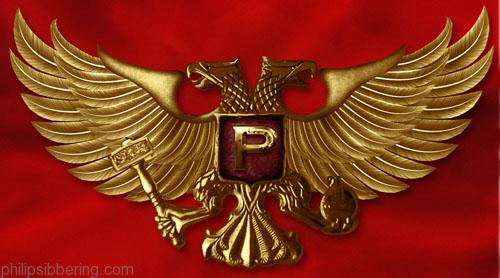 To make the distinction between Philverse and Philhammer clear: I'll be referring to my revision of Warhammer as Philhammer. There will be no separate website for 'Philhammer' as it contains GW IP. I'll be updating the articles, and filling out some of the missing details. I have to catch up on a fair bit of background. Philhammer covers the hidden science of 40K, the effects of the Dark Age of Technology has on contemporary Imperial design and culture, and attempt to explain how the 'grimdark' background can make sense to a modern, sceptical, tech-savvy, audience. In grounding 40K in reality, and explaining warp based technologies, it makes it easier to suspend your disbelief - or at least that is my aim.
To make the distinction between Philverse and Philhammer clear: I'll be referring to my revision of Warhammer as Philhammer. There will be no separate website for 'Philhammer' as it contains GW IP. I'll be updating the articles, and filling out some of the missing details. I have to catch up on a fair bit of background. Philhammer covers the hidden science of 40K, the effects of the Dark Age of Technology has on contemporary Imperial design and culture, and attempt to explain how the 'grimdark' background can make sense to a modern, sceptical, tech-savvy, audience. In grounding 40K in reality, and explaining warp based technologies, it makes it easier to suspend your disbelief - or at least that is my aim.
Sciror
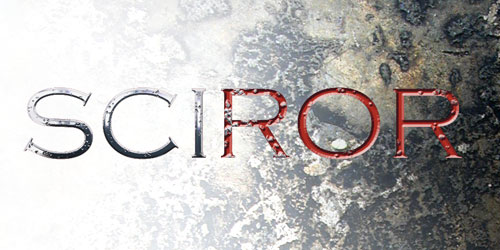 It was pointed out to me by other fans that because 'Philhammer' has so many of my ideas supporting it, that it had become its own setting. So I decided to run with it and develop a background-setting using all the ideas of Philhammer, ripping out all the GW IP, and see what happens. Thus Sciror was created. At its heart, it is a drop in 'replacement' setting for the 'Dark Age of Technology' from 40K but seen from the other side of history and the more positive perspective of the 'Golden Age of Technology'. It details the civilisation before the fall, why the fall happened, and the effects of the fall.
It was pointed out to me by other fans that because 'Philhammer' has so many of my ideas supporting it, that it had become its own setting. So I decided to run with it and develop a background-setting using all the ideas of Philhammer, ripping out all the GW IP, and see what happens. Thus Sciror was created. At its heart, it is a drop in 'replacement' setting for the 'Dark Age of Technology' from 40K but seen from the other side of history and the more positive perspective of the 'Golden Age of Technology'. It details the civilisation before the fall, why the fall happened, and the effects of the fall.
The fall comes about when the machines of the Supremacy leave humanity to their fate after the 'Psidemic' (world altering psionic manifestations). It replaces the popular trope of 'machine betrays man', from films such as Terminator, with 'man betrays machine' (there still isn't the exact tv trope - suggestions in the comment if you have one?).
Things get complicated: In working up this background I realised that: if Sciror could explain 40K tech, then it could explain any sci-fi. A lot of other sci-fi has the same issues as 40K, and I figure other creatives may encounter similar problems while creating their own worlds. So I then changed the concept of Sciror to 'meta-framework' for creating backgrounds. Anyone can create their own background for their setting using Sciror as a springboard for their vision. All the technology is explainable, interoperable, and you can concentrate on the story. If a fan of your narrative wants to know how something actually works, from their modern-day perspective, Sciror explains it. Sciror will still detail human advancement over the centuries, but it's stable, a 'vanilla' core of logical exploration of ideas about the future. All the action happens in scenarios branching off from this core, where events like The Fall become a 'what if'. Here are the 'what ifs' that will serve as an example of backgrounds created with Sciror: 'Stare in the Abyss', 'Psidemic' (The Fall) and 'Twistasy', which I'll be jumping between in a chaotic manner during development.
Displacement Point: The idea of Sciror is to create a 'displacement point'. Instead of using the modern world as our frame of reference, we move our perspective to an imagined point in the future and use that as a basis for storytelling. I think this can work as we live in stories, our perception of the world is a narrative, and we have so many stories through modern media that we can imagine a future world much more easily than in the past. More importantly, when we think of a setting that is incomplete, we quickly fix it by borrowing from other settings to fill in the gaps. This natural ability, and wealth of resource material, means we can create a common 'dreamscape'. A place where all stories come together, and interact with each other, using our common culture. Then we can start designing new stories taking this new 'reality' into account. It will create an unusual situation that if you know 'Sciror', the stories will make sense: in the same way traditional sci-fi references our world, this new sci-fi will reference Sciror. Stories based on stories. Using fiction as a basis for future imagineering. If you do not know Sciror, then it is probably going to be a culture shock as everything is different, and I want to make it different.
Visions of the Near Future
Here I'll be designing and imagining solutions to today's problems. Which will act as a springboard for Sciror. These solutions create the base narrative, the foundation, onto which I'll raise Sciror. By designing for the 'here and now', we can create narratives that are restrained by reality, and hence more believable. Anyone can judge the designs and see if they accept them. For example, if I design hab-unit: you can quickly decide if you would want to live there or not. If you do, and you think the design is a good idea, then you are 'hooked'. Then it's time to reel you in. Once your logic accepts the premise, it is much harder to put the brakes on, and then we are on the Philverse train to the future. At least that is the plan.
This all means you can start at Philhammer and follow the logic, and narrative, all the way back through history and end up in the here and now: looking at designs for our modern world. The reverse will also be true, that you can start from here and end up in 40K. I mentioned hab-units, and I think that is the first thing to tackle, as living space is so personal. You will know if you like it or not. I'll post my stages of Ecorium development, as this spans all era, and see how it takes. Will it hook?
Back again
It's been a couple of years since I last posted on my blog. I had to step away due to family commitments. Now that my role as a carer is coming to an end, I find myself thinking about Philverse, Sciror, and WarSpike more and more. Lots of ideas have been running around in the back of my head while I've been away, no matter how much I tried to suppress them, and they are starting to bubble up to the surface. They need to be expressed; otherwise I'll explode, so I've starting to work them up.
As part of my Near Future designs, the first stepping stone of the Sciror timeline, I want to touch upon architecture, psychology and politics. Before I went on hiatus I started to think about these things, and how to lay a foundation unto which I build and justify the setting. My CORR housing post was my first outline of how to deal with a housing crisis in Britain, and how to build on the green belt land. I rendered up this image a couple of years ago;

These are 1-bed CORR hab-units, around 50 sq.m. (current UK minimum), along with a garden, built over the road, with commercial space inside, and parks outside. Using the real world as a basis for the design constraints the solutions, and forces creative thought. In being designed for real-world situations, they can be judged by anyone, and if they seem reasonable, they will be more believable. The idea is to make it easier to suspend disbelief and draw the reader in. We can then use these as a springboard for future developments, as it all leads to the Ecoria concepts. The nuke proof Ecoria are an extreme idea, they can be hard to accept, so I want to show the steps of how we get there.
Read the rest of this entry »Technology line
This is how I see the order of technology advancement in 40K (and Sciror). Each level of tech building on the last, with speculative breakthroughs, and incorporating the flavour of the setting. It's how all the technologies link together, of all the species of 40K, and how that technology integrates with a setting that includes extra-science (the warp) and the knock on phenomena of psi-powers.
Me-can-icus, or Me-can't-icus
 This post is about the Adeptus Mechanicus, their perceived level of technical ability as portrayed in background, and two opposing points of view commonly encountered on 40K forums. In the background of 40K the Adeptus Mechanicus seem to be pig ignorant of the technology they control, while atmospheric of the stetting, it seems at odds with common sense notion of the technical ability needed to maintain high end systems. Such high end systems would need a thorough understanding of how they work in order to repair them. Rote learning, an often used phrase to explain the ignorant building advanced systems, will only get you so far. I thought I'd chip in my ideas on this whole 'Adeptus Me-can-icus, or Me-can't-icus' debate.
This post is about the Adeptus Mechanicus, their perceived level of technical ability as portrayed in background, and two opposing points of view commonly encountered on 40K forums. In the background of 40K the Adeptus Mechanicus seem to be pig ignorant of the technology they control, while atmospheric of the stetting, it seems at odds with common sense notion of the technical ability needed to maintain high end systems. Such high end systems would need a thorough understanding of how they work in order to repair them. Rote learning, an often used phrase to explain the ignorant building advanced systems, will only get you so far. I thought I'd chip in my ideas on this whole 'Adeptus Me-can-icus, or Me-can't-icus' debate.
Space Marine - Modus Operandi
This post follows on from the previous post: 'Space Marine Capabilities'. The concept is to extrapolate the battlefield role of Space Marines using the capabilities defined in that post, and drawing in other concepts and definitions defined in 'Philverse'. Where possible I will add a link to any concepts referenced. Now we have an idea of what a marine can endure, it clarifies what their role on the battlefield really is – or what it should be.
Invincible?
Now we have an understanding of what a Space Marine's Power Armour can physically resist, it seems glaring obvious that they are vulnerable to fixed weapons and heavy weapons. Space Marines may be small in comparison to an APC or IFV, but they are not going to want to be caught out in the open. This means they will have to use cover like everyone else. However using cover is not really 'shock troop' enough for Space Marines, we need a way to get them into combat far quicker, yet with the element of surprise (the whole idea of shock!). One of the fluff heresies I introduced was the idea of active camouflage.
Active Camouflage
This means the outer ablative layer is going to get an application of active camouflage material (rather than a Predator like cloaking field - which would be great but a bit too high-tech). This material will mimic the surrounding terrain and materials. In combination with this active camouflage surfacing, the armour also needs a way to manage it's heat signature. This can be done with a thermoelectric layer to recover heat energy and convert it to electricity for storage. Therefore the armour would emit very little heat and this would counter vision enhancement gear that scans for IR (infrared) and T-rays (Terahertz radiation).
This means it is quite hard to detect a stationary Space Marine while their active camouflage is on. This would depend on surroundings. While in soft cover they would be very hard to make out even when directly looking at them, but they would be much easier to see in desolate terrain like a desert (for some missions they may need an active camo cloak to breakup their outline). In the dark they would be virtually impossible to see (even if lookouts are equipped with IR gear, and other advanced scanners).
Colour of fear?
The use of active camouflage does require some justification. There is a famous quote in 40K that camouflage is the 'colour of cowardice'.
It is also true that the Marines primary aim is to kill the enemy. If camouflage allows them to circumvent heavy weapons, avoid looses, allowing more marine to survive to kill the enemy behind those heavy weapons - the Marine may accept this as necessary. In effect their camouflage allows them to get to enemies 'hiding' behind heavy weapons.
It may be that camouflage is frowned upon only in certain situations. Standing up and getting your head blow off with a heavy weapons is worse than sneaking about. Camo is the lesser of the two; sneaking about trumps having no head. A Marine may not like sneaking about, but they console themselves that any dishonour they feel will be taken out on the enemy – 'How dare you force me to sneak about!'.
Another areas where active camouflage really shines in counter guerilla warfare. Guerilla fighters will flee from marines, often with the aim to leading the Marines into a heavy weapon kill zone, so the marines have to sneak up on them. In this instance 'camouflage' allows the Marines to engage enemies who will flee. In this instance it's a lot like hunting. Though for this role I imagine the Scouts would cut their teeth.
Shock
The idea is for the marine to get across open ground and behind enemy lines without detection. Once behind enemy lines they are clear of most fixed weapons and can resort to shock tactics. The first is changing the active camouflage layer to their chapter colours, which makes then highly visible (most marines have very bright chapter colours). For an enemy to suddenly be confronted with massive 7-8' Space Marines, encased in small arms resistant armour, in and amongst their number is going to be quite a shock and the resulting combat is going to be chaotic (this is a big reason for my notes in the bolter, as having Power Armour be bolter resistant would greatly reduce the casualties of friendly fire: so the Marines can really let rip). The enemy are probably armed with small arms and this is not going to affect the Marines. This means the enemy is likely to rout as the marines can mow them down with impunity.
More shock
Another way to get into the enemy complex would be via drop pod. Using the ideas I put forward in my drop pod article, they marines can smash into the enemy complex at high speed, creating a huge blast crater on impact, and deploy. They could use the edges of the crater for cover and many bunkers would be damaged.
Battlefield Role
Taking all this into account a Marine would remain hidden for the most part until they are behind enemy lines. Once behind enemy lines they would change back to their chapter colours and let rip. This would be extremely shocking to the enemy, and disrupt enemy lines. Being attacked by Marines from behind, while all your heavy weapons are facing the other direction, is going to cause chaos.
Table top game
I suppose if you translated this into the table top game, the marines can be 'teleported' in. This 'teleport' is not a real teleport, it merely accounts for their stealth abilities. Such an attack would force psychology tests and most likely make many opponents flee (or at least move away to regroup).
Looking at this type of attack, it would seem appropriate to allow the IG to deploy Marine allies in this manner as a surprise attack.
In the open Marines would be harder to target, and modifiers would apply. Renegade humans would be very vulnerable to Marines, but aliens may be far more capable.
I suspect the Eldar could track them (through psionics), so could the Nids and Necrons, maybe even the Orks have an idea where the Marines are by instinct. In these instances perhaps the Marine player could use 'blips' from Space Hulk to disguise the true nature of his units.
Small arms would be less effective: so uprate their armour value in some way. There would also be a few special rules – like weaker values when facing power weapons. I'm not too keen on the Armour mechanics, perhaps simply added the value to the T score? Another debate for another time.

